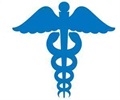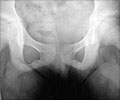Signs and Symptoms of Infantile Cortical Hyperostosis
The most striking feature of Infantile Cortical Hyperostosis is the presence of soft tissue swellings that are deeply placed in relation to the bone involved. Additionally, cortical thickening of the affected bone is also present. These swellings usually start to appear within 90 days of birth although in some cases the condition may present itself as late as two years after birth. The mandible and the clavicle or the collarbones are the ones more frequently affected. The presence of facial swelling is considered pathognomic of the disease but these are not those well-defined in the inherited or familial form of the disease. The ribs, tibia, scapula and the calvarium are the bones affected in the familial form of the disease. The soft tissue swellings are invariably associated with deep muscles and occur most frequently on the neck, face, chest and the lower limbs. Other features associated with
- Fever
- Hyperirritability
- Pleurisy
- Dysphagia
- Pseudoparalysis
When the mandible is involved there are thick swellings at the angle of the bone in what is called the ramus area. This gives a chubby appearance to the infant and is often mistaken for cherubism. It leads to malocclusion, where the teeth are not properly aligned in relation to each other, resulting in a grotesque appearance in early childhood.














